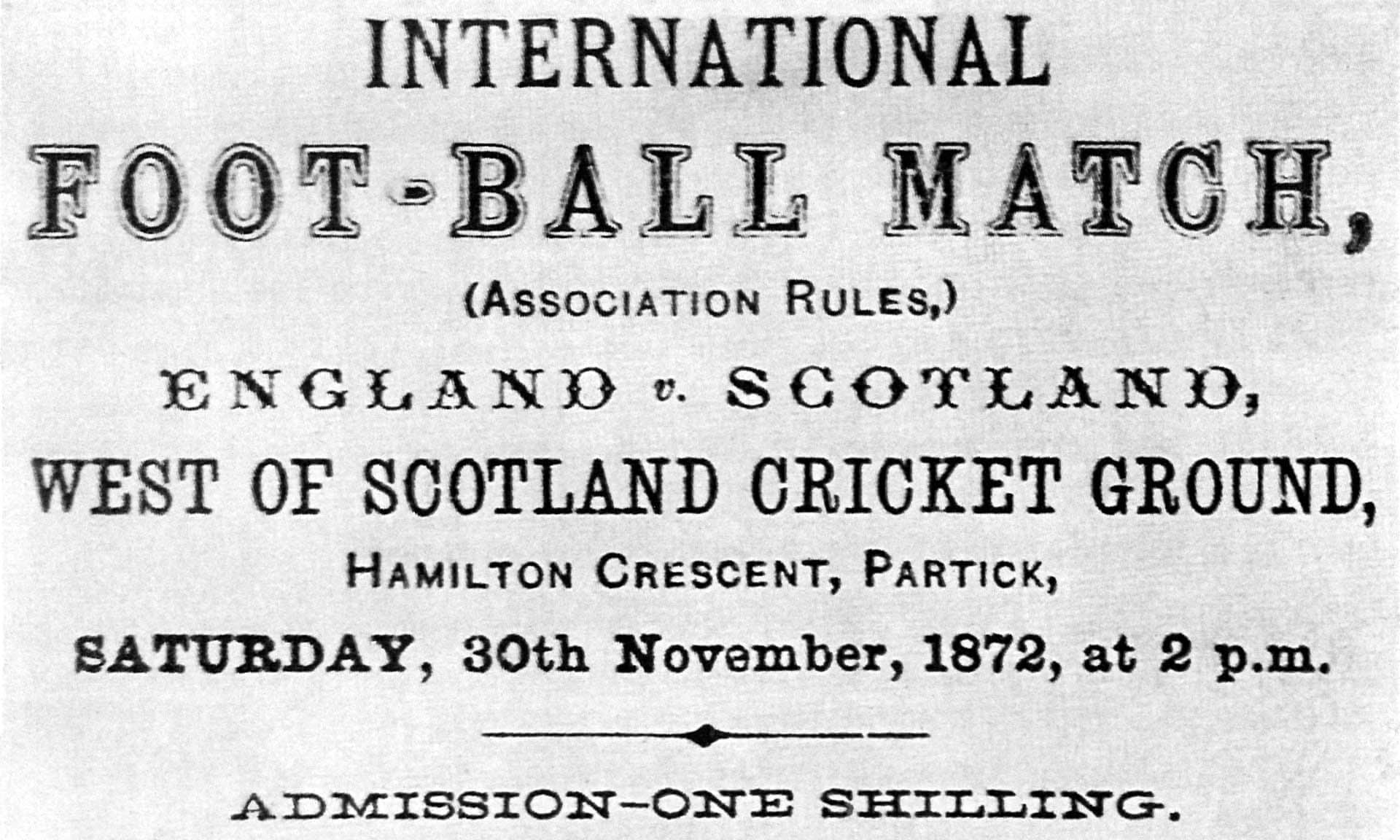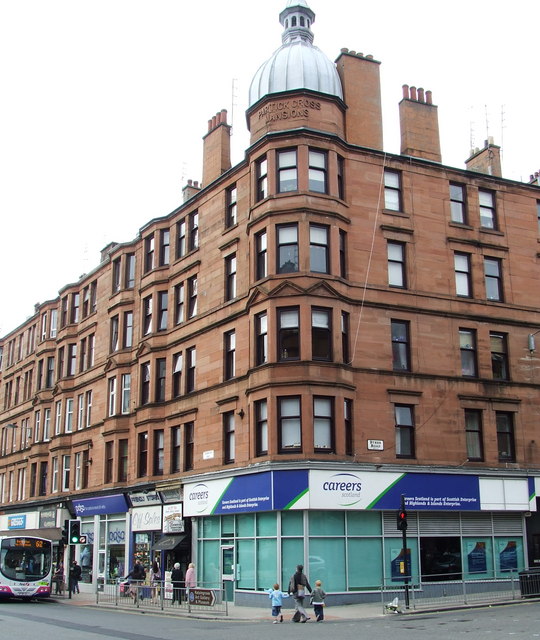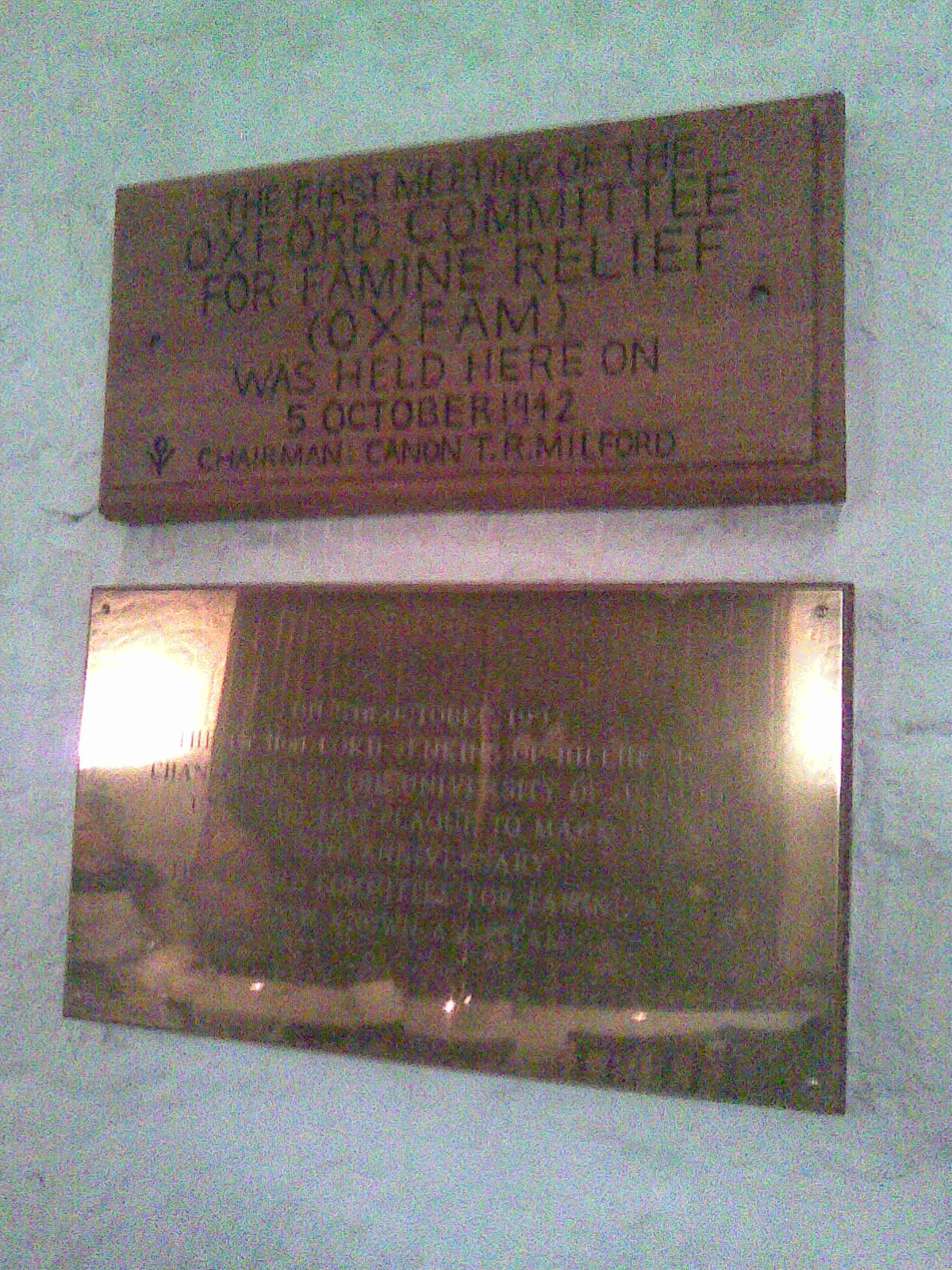|
Byres Road
Byres Road is a street in Hillhead, Glasgow, Scotland. It is the central artery of the city's West End. Location and history Byres Road is a mixed commercial, shopping and upmarket residential area consisting largely of traditional sandstone tenements with retail premises on the ground floor and three floors of residential flats above. Its proximity to the University of Glasgow has meant that the surrounding West End of Glasgow has a large student population. Murals painted by the notable Glasgow artist Alasdair Gray adorn the Ubiquitous Chip, the Oxfam Bookshop, and the Oran Mor bars. Stretching from Great Western Road at the Botanic Gardens in the north to Dumbarton Road at Partick Cross in the south, the road originally ran through a relatively rural area called the Byres of Partick (also known as Bishop's Byres). The oldest pub in the area is the 17th century Curler's, originally sited beside a pond used for curling and, legend has it, given a seven-day licence ... [...More Info...] [...Related Items...] OR: [Wikipedia] [Google] [Baidu] |
Glasgow City Council
Glasgow City Council (Scottish Gaelic: ''Comhairle Baile Ghlaschu'') is the Local government in Scotland, local government authority for Glasgow, Glasgow City council area, Scotland. In its modern form it was created in 1996. Glasgow was formerly governed by a corporation, also known as the town council, from the granting of its first burgh charter in the 1170s until 1975. From 1975 until 1996 the city was governed by City of Glasgow (1975–1996), City of Glasgow District Council, a lower-tier authority within the Strathclyde region. Glasgow City Council has been under no overall control since 2017, being led by a Scottish National Party minority administration. The council has its headquarters at Glasgow City Chambers in George Square, completed in 1889. History Glasgow Corporation Glasgow was given its first burgh charter sometime between 1175 and 1178 by William the Lion. It was then run by "Glasgow Town Council", also known as "Glasgow Corporation", until 1975. The city ... [...More Info...] [...Related Items...] OR: [Wikipedia] [Google] [Baidu] |
Òran Mór
Òran Mór (Scottish Gaelic: "great melody of life" or "big song") is a theatre, restaurant, entertainment and music venue in Glasgow. From 1862 until 1978 the building was the Kelvinside Parish Church (Botanic Gardens) before becoming redundant and then converted into an entertainment venue in 2004. History The building was founded as the Kelvinside Free Church, as a parish church of the Free Church of Scotland. The foundation stone was laid on 4 September 1862, and the church was built in the Neo-Gothic style, on designs by J. J. Stevenson. A spire was built in an Italian Gothic Pyramid style. After the Free Church of Scotland joined the United Presbyterian Church in 1900 to form the United Free Church of Scotland, the church was renamed the Kelvinside United Free Church. The name was once more changed when the United Free Church of Scotland merged into the Church of Scotland, becoming Kelvinside Parish Church in 1929. Between 1929 and 1978, the church served as a Par ... [...More Info...] [...Related Items...] OR: [Wikipedia] [Google] [Baidu] |
Hillhead Subway Station - Geograph
Hillhead (, ) is an area of Glasgow, Scotland. Situated north of Kelvingrove Park and to the south of the River Kelvin, Hillhead is at the heart of Glasgow's fashionable West End, with Byres Road forming the western border of the area, the other boundaries being Dumbarton Road to the south and the River Kelvin to the east and north. History Hillhead was an independent police burgh from 1869, but as Glasgow grew during the nineteenth century it was first swallowed up physically by the growing city, and then administratively in 1891. Landmarks The University of Glasgow is located in the area, having moved from its original site on the High Street to its current Gilmorehill location in 1870. Consequently a great number of students live in the area. Many academics from the University live in the area along with BBC Scotland employees, actors, broadcasters, writers and many students from various universities and teaching hospitals, creating an economically and culturally diverse c ... [...More Info...] [...Related Items...] OR: [Wikipedia] [Google] [Baidu] |
Charles II Of England
Charles II (29 May 1630 – 6 February 1685) was King of Scotland from 1649 until 1651 and King of England, Scotland, and King of Ireland, Ireland from the 1660 Restoration of the monarchy until his death in 1685. Charles II was the eldest surviving child of Charles I of England, Scotland and Ireland and Henrietta Maria of France. After Charles I's execution at Palace of Whitehall, Whitehall on 30 January 1649, at the climax of the English Civil War, the Parliament of Scotland proclaimed Charles II king on 5 February 1649. However, England entered the period known as the English Interregnum or the English Commonwealth with a republican government eventually led by Oliver Cromwell. Cromwell defeated Charles II at the Battle of Worcester on 3 September 1651, and Charles Escape of Charles II, fled to mainland Europe. Cromwell became Lord Protector of England, Scotland and Ireland. Charles spent the next nine years in exile in France, the Dutch Republic and the Spanish Netherlands. ... [...More Info...] [...Related Items...] OR: [Wikipedia] [Google] [Baidu] |
Curling
Curling is a sport in which players slide #Curling stone, stones on a sheet of ice toward a target area that is segmented into four concentric circles. It is related to bowls, boules, and shuffleboard. Two teams, each with four players, take turns sliding heavy, polished granite stones, also called ''rocks'', across the ice ''curling sheet'' toward the ''house'', a circular target marked on the ice. Each team has eight stones, with each player throwing two. The goal is to accumulate the highest score for a ''game''; points are scored for the stones resting closest to the centre of the house at the conclusion of each ''end'', which is completed when both teams have thrown all of their stones once. A game usually consists of eight or ten ends. Players induce a curved path, described as ''curl'', by causing the stone to slowly rotate as it slides. The path of the rock may be further influenced by two sweepers with brooms or brushes, who accompany it as it slides down the sheet and ... [...More Info...] [...Related Items...] OR: [Wikipedia] [Google] [Baidu] |
Curlers Tavern
The Curlers Rest, formerly the Curlers Tavern, is the oldest drinking establishment on Byres Road, Glasgow, Scotland. A tavern is said to have been situated at this site since the 17th century, when this part of the city was still countryside. The rural connection is today only remembered in the name Byres Road, from the lands known as the Byres of Partick. The present pub is housed in an 18th-century two-story cottage-type building and derives its name from the large pond, which could be found nearby. Every winter curlers came to play on the ice. Furthermore, the Partick Curling Curling is a sport in which players slide #Curling stone, stones on a sheet of ice toward a target area that is segmented into four concentric circles. It is related to bowls, boules, and shuffleboard. Two teams, each with four players, take t ... Club (established in 1842) had its pond here in 1848. There is also a legend associated with the pub which claims that King Charles II came riding on ... [...More Info...] [...Related Items...] OR: [Wikipedia] [Google] [Baidu] |
Partick
Partick (, Scottish Gaelic: ''Partaig'') is an area of Glasgow on the north bank of the River Clyde, just across from Govan. To the west lies Whiteinch, to the east Yorkhill and Kelvingrove Park (across the River Kelvin), and to the north Broomhill, Glasgow, Broomhill, Hyndland, Dowanhill, Hillhead, areas which form part of the Glasgow#West End, West End of Glasgow. Partick was a Police burgh from 1852 until 1912 when it was incorporated into the city.Second City of The Empire: 1830s to 1914 from theglasgowstory.com. Retrieved 22 December 2011. Partick is the area of the city most connected with the Scottish Highlands, Highlands, and several Gaelic agencies, such as the Gaelic Books Council (Scottish Gaelic: ''Comhairle nan Leabhraichean'') are located in the area. [...More Info...] [...Related Items...] OR: [Wikipedia] [Google] [Baidu] |
Partick Cross
Partick Cross is a major road junction in Partick, in the west end of the city of Glasgow, Scotland. The junction is the meeting point of Dumbarton Road, Byres Road, Partick Bridge Street and Coopers Well Street. History Riots took place on the centenary of Daniel O'Connell's birth on 6 August 1875. The Irish immigrants decided to celebrate with a march and the locals rose up in protest. The centre of what was said to be a major civil disturbance was at Partick Cross. Thirty locals had to be sworn in as special constables including Rachel Hamilton and they drove the rioters back. Description Near to the Cross are some of the city's best known tourism, tourist destinations including: *The Kelvingrove Art Gallery and Museum *Kelvingrove Park *The University of Glasgow Also nearby, in an alleyway off Dumbarton Road, is the Kelvinhall subway station – previously known as 'Partick Cross' until 1977 when modernisation work took place. References External links * {{Transp ... [...More Info...] [...Related Items...] OR: [Wikipedia] [Google] [Baidu] |
Glasgow Botanic Gardens
Glasgow Botanic Gardens is a botanical garden located in the West End of Glasgow, Scotland. It features several glasshouses, the most notable of which is the Kibble Palace. The Gardens has a wide variety of temperate and tropical flora, a herb garden, a chronological bed with plants arranged according to their introduction to Scotland, the UK's national collection of tree ferns, and a world rose garden officially opened in 2003 by Princess Tomohito of Mikasa. The River Kelvin runs along the north side of the Gardens and continues through Kelvingrove Park, the Kelvin walkway providing an uninterrupted walking route between the two green spaces. The Botanic Gardens was awarded a Green Flag Award in 2011. History In 1817 about of land were laid out at Sandyford, near Sauchiehall Street, Glasgow, and run by the Royal Botanic Institution of Glasgow (founded by Thomas Hopkirk of Dalbeth and Prof James Jeffray Professor of Botany at Glasgow University), and were intended ... [...More Info...] [...Related Items...] OR: [Wikipedia] [Google] [Baidu] |
A82 Road
The A82 is a major road in Scotland that runs from Glasgow to Inverness via Fort William, Highland, Fort William. It is one of the principal north-south routes in Scotland and is mostly a trunk road managed by Transport Scotland, who view it as an important link from the Central Belt to the Scottish Highlands and beyond. The road passes close to numerous landmarks, including Loch Lomond, Rannoch Moor, Glen Coe, the Ballachulish Bridge, Ben Nevis, the Commando Memorial, Loch Ness, and Urquhart Castle. Along with the A9 road (Scotland), A9 and the A90 road, A90 it is one of the three major north–south trunk roads connecting the Central Belt to the North. The route is derived in several places from the Old military roads of Scotland, military roads constructed through the Highlands by George Wade, General George Wade and William Caulfeild (British Army officer), Major William Caulfeild in the 18th century, along with later roads constructed by Thomas Telford in the 19th. The mo ... [...More Info...] [...Related Items...] OR: [Wikipedia] [Google] [Baidu] |
Oxfam
Oxfam is a British-founded confederation of 21 independent non-governmental organizations (NGOs), focusing on the alleviation of global poverty, founded in 1942 and led by Oxfam International. It began as the Oxford Committee for Famine Relief in Oxford, UK, in 1942, to alleviate World War Two related hunger and continued in the aftermath of the war. Oxfam has an international presence with operations in 79 countries and 21 members in the Oxfam Confederation in Australia, Asia, Europe, the Middle East, North and Latin America and the Caribbean. Since 2005, Oxfam International has been involved in a series of controversies as it expanded, especially concerning its operations in Haiti and Chad. There have been criticisms of its management of operations in the UK as well. History Founded at 17 Broad Street, Oxford, as the Oxford Committee for Famine Relief by a group of Quakers, social activists, and Oxford academics in 1942 and registered in accordance with UK law in 1943 ... [...More Info...] [...Related Items...] OR: [Wikipedia] [Google] [Baidu] |







